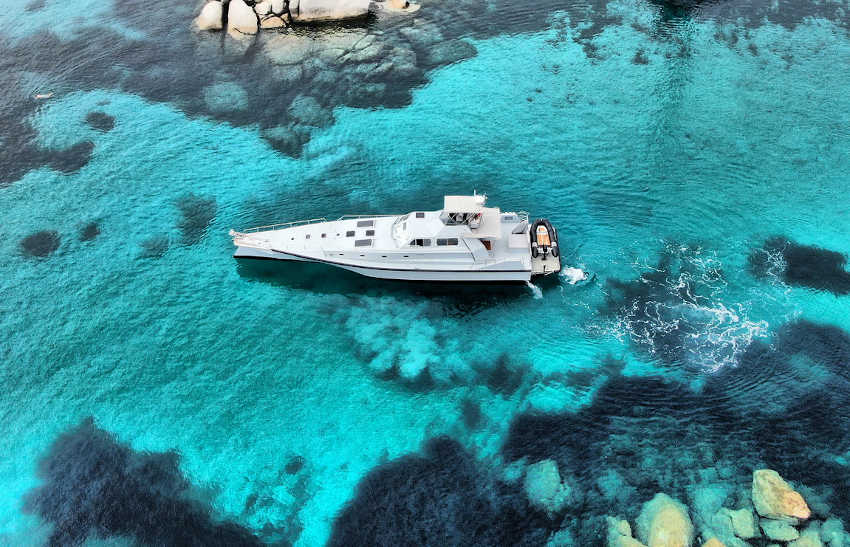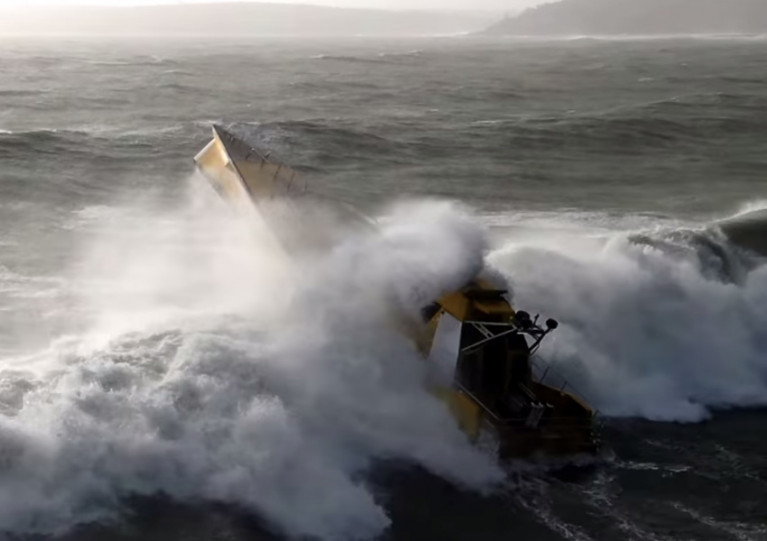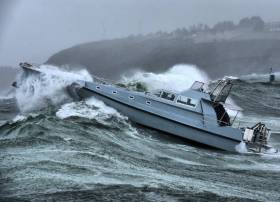Displaying items by tag: XSV20
Safehaven Marine put Thunder Child II to the test against the might of Storm Brendan yesterday — showing just how well the wave-piercing powerboat can handle the roughest elements at sea.
Sea trials for the XSV20 design began a year ago but had taken a backseat to the successful Cork boatbuilder’s commissions for port and harbour vessels — an enviable situation which nevertheless saw the planned North Atlantic Challenge that had been scheduled for last summer moved to this year.
Thunder Child II has been developed in mind of setting a new west-east transatlantic world record, and a proposed route has been plotted from St John’s in Newfoundland, via Greenland and Iceland, to Killybegs on Ireland’s West Coast.
Here's an epic slow motion sequence of Thunder Child II hit by a couple of massive waves during Storm Brendan today, beautifully shows the power and majesty of the sea. #StormBrendan @captainbob76 @MaryP972 A nice video follows @LarryCpix @mbymagazine @urlofcork @AfloatMagazine pic.twitter.com/tYZwIU0QVc
— Safehaven Marine (@SafehavenMarine) January 13, 2020
Safehaven Marine Shares Video Of Epic Delivery For Jack Setton’s XSV20
Safehaven Marine has shared a video of the recent delivery of its latest XSV20, named Safehaven, to its owner Jack Setton from Cork to Sardinia.
Safehaven was commissioned by and built for Jack Setton, a well-known name in the superyacht world. The original owner of, among others, the 194ft expedition superyacht Senses was “intimately involved” with Safehaven’s design and specification during construction.
The hybrid design, which fuses an asymmetrical catamaran with a wave-piercing monohull, incorporates a Hysucraft hydrofoil system for efficiency at high speeds, and is powered by a pair of Caterpillar C18 1,150hp engines through ZF 500 gearboxes with propulsion by Marine Jet Power Hybrid 350 water jets.
During sea trials in August, Safehaven achieved a very impressive (considering the 23m length) maximum speed of 45kts. Long range fuel tanks provide extended offshore voyage capabilities and a 500 nautical mile range.
Safehaven is also fitted out to a very high standard with a clean, minimalistic but luxurious interior design incorporating three separate below-deck forward sleeping cabins and a spacious main cabin incorporating SHOXS military spec shock mitigation seating for the ‘driving area’ and a full concealed galley and comfortable dinette set in the living area.

Twin Dometic 27,000btu air conditioning units powered by an 18kw AC generator ensure cabins are kept cool in hot climates. A flybridge provides a second commanding helm position and there is also carries a crane-launched 4m RIB on a large dive platform. A spacious aft deck also incorporates seating areas converting to loungers and a large sun bed.

Safehaven sailed from East Ferry Marina in Cork Harbour on the morning of Sunday 15 September to begin the 2,500nm delivery voyage to Sardinia in Italy, which Safehaven Marine MD Frank Kowalski recounts in detail HERE.
Safehaven Marine have shared new video from rough weather sea trials for its latest pilot boat, Dalmore, as well as its new XSV20 named Safehaven.
As previously reported on Afloat.ie, Dalmore is an Interceptor 48 — the 15th of this model, and 40th pilot boat overall for Safehaven Marine — commissioned by the Port of Cromarty Firth in Scotland.
Also on trial was the Cork-based extreme performance boatbuilder’s latest XSV20, which is soon to take up residence in the Bay of Biscay.
Safehaven follows Thunder Child II, the next generation of the piercing monohull class that will now see its world record Transatlantic attempt take place in summer 2020 — thanks in part to the busy business’ full order book this year.
Safehaven Marine’s latest design concept is the XSV20, which has been undergoing scale model testing out of its Cork Harbour boatyard.
Combining a twin-stepped asymmetrical catamaran hull with a wave-piercing monohull, the hybrid XSV20 aims to set a new standard for high-speed patrol and interceptor vessels.
Safehaven says the 22m hull mould is now complete on the patent-pending design following six months of research and development, during which 12 scale model variants were extensively tank-tested to optimise performance and hydrodynamics.
The first full-scale XSV20 will be powered by four Caterpillar C8.7 650hp engines, ZF gearboxes and France Helises SDS surface drives. The boat will have a maximum speed of well over 50 knots, with a 40kt cruise speed and a range of 800 nautical miles.
The design incorporates all the features of Safehaven’s smaller 11-17m Barracuda range of naval craft, but with greater endurance, payload and crew capacity.
The design has been developed, as Safehaven’s designer and MD Frank Kowalski puts it, “in ones endless pursuit of travelling fast in rough seas” and should allow higher speeds to be maintained in rough sea conditions with greater crew comfort, safety and endurance than conventional designs.
Safehaven says its demonstrator vessel will be due for launch very early next year, when we should expect to see some of the company’s usual extreme testing.
































































